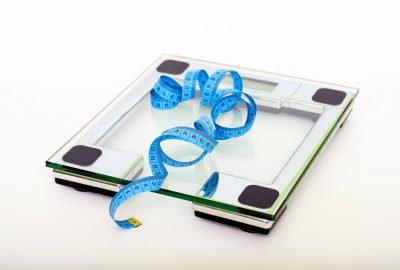Mobility is a popular term in the fitness world, but what exactly does it mean, and how do we train for it? This article answers both of those questions, as well as providing specific exercises, training advice and answers to the some of the biggest mobility questions.
What is Mobility Training?
Mobility in the world of fitness is best described as the ability to move joints through a full range of motion. For example…
- A taekwondo or karate fighter who can kick to head height has great mobility in their hips.
- A weightlifter performing a snatch has great shoulder mobility

Mobility Versus Flexibility
Mobility is defined by movement, it is dynamic. Flexibility is static, and without movement. To provide an example…
Flexibility: Gymnast sitting in a front split position on the floor
Mobility: Gymnast jumping into a front split position in the air
Can a Person be Flexible but Lack Mobility?
Absolutely, there are plenty of people can achieve fantastic, stretched positions passively (great flexibility) but struggle to get into those same positions dynamically (poor mobility)
This is often due to a lack of motor awareness, strength or the required power to snap into those full range of motion positions quickly.
A great example might be the squat. You can have someone who is very flexible through their hips and ankles and can easily achieve a “pseudo-squat” position whilst lying on their back, but who struggles to perform a proper squat dynamically.
With all that said, though, flexibility does definitely contribute to mobility, and people who have already achieved high levels of flexibility will often be able to obtain the matching mobility far quicker than people with low levels of flexibility.
Does Mobility Training Help to Prevent Injury?
This is an interesting question and is still the topic of some debate within the rehab, physiotherapy and sports performance worlds.
So far, the evidence seems to be pointing to yes, but only in certain situations.
Poor mobility around key joints can negatively impact sports performance if it stops the athlete achieving the optimum positions for the movement. What tends to happen in these situations is that the athlete (being the clever person that they are) finds a way around the issue by compensating in some way or form with other joints or muscles. So they achieve the movement, but it comes at a cost. By increasing mobility at key joints, the player can achieve the optimum positions, and no compensation needs to occur, which reduces injury likelihood.
However, if the athlete can already achieve the desired positions, it’s highly unlikely that increased mobility with have any role in reducing injury risk.
How Can I Improve Mobility?
Improving mobility is all about improving your movement. Here is a 3-step guide to improving your mobility over the next few weeks.
1) Move More
If you’re someone who spends a lot of time sat at your desk, then the first step to improving your mobility is to add more movement into your day.
Every 30 minutes make sure to stand up, move around, do a few squats or lunges or glute bridges, maybe also a few shoulder circles.
And then every 90 minutes get up and go for a 10-minute walk.
The difference this will make to your mobility will be HUGE. You’ll also notice that your hips feel better, your lower back feels better, and your shoulders feel better. It really is a win-win.
2) Exercise Each Week with As Much ROM as Possible
Since mobility is all about joint Range Of Motion (ROM), it makes sense that if you want to improve yours you need to be moving joints through as much range of motion as possible as often as possible. A good way to do this is to really focus on range of motion during your workouts.
What are the best mobility exercises?
- Squats
- Lunges
- Split Squats
- Side lunges
- Overhead Presses
- Hangs from a bar
- Romanian Deadlifts
And you might be thinking, “wait a moment, these are just normal free weight exercises”
Exactly! That’s the magic of mobility training, it’s just an extension of what you would normally do during a workout, only with extra attention to range of motion.
- Squats, lunges and split squats will improve your hip and ankle mobility
- Side Lunges will improve adductor mobility
- Overhead presses and bar hangs will improve mobility in your shoulders
- Romanian deadlifts will improve mobility in your hamstrings
You really don’t need loads of crazy ‘mobility’ exercises.
3) Add Specific Mobility to Your Training
Since mobility is all about movement, it is also fairly movement specific. What this means is that…
If you want to improve your mobility for jumping front splits, then your mobility exercises need to be very similar to the jumping front splits.
If you want to improve your mobility for the front squat, then your mobility exercises need to be very similar to the front squat.
Make sense?
Let’s take the front example and build on it. We’re trying to improve our front squat, but it hurts our knees and we can’t comfortably get to a bottom squat position. Some good, specific exercises for us would be…
Goblet squats: Very similar torso position and will improve hip and ankle mobility in very specific ways
Front squats to a box: The exact same exercise but not all the way down. We could then use a lower and lower box as we improve.
Pretty simple stuff.
And that’s what the third step of mobility training is all about. You’re taking the general mobility improvements you’ll make from steps 1 and 2 and then making them specific to the movement(s) that you’re trying to improve.
Mobility Summary
Mobility is the dynamic version of flexibility that is all about movement. In certain circumstances it can help to prevent injury by allowing people to achieve optimal positions during key movements. To improve your mobility follow a 3-step process of moving more throughout the day, increasing range of motion during workouts, and then adding in exercises very specific to the movements you want to get better at.
Follow the 3-step process for the next month and you’ll see the improvements for yourself.
References / Further Reading
Andersson SH, Bahr R, Clarsen B, et al. (2017) Preventing overuse shoulder injuries among throwing athletes: a cluster-randomised controlled trial in 660 elite handball players. British Journal of Sports Medicine; 51:1073-1080
Related Resources


